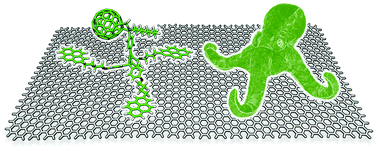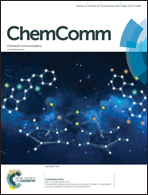Non-covalent graphene nanobuds from mono- and tripodal binding motifs†
Abstract
Graphene nanobuds were prepared via the non-covalent anchoring of C60-based molecules endowed with one or three pyrene units, respectively. TGA, FTIR, UV-Vis and TEM investigations confirmed the formation of nanohybrids. For the two molecular derivatives, striking differences were determined in their interaction with graphene or carbon surfaces by Raman, cyclic voltammetry and molecular mechanics calculations, revealing the important role of pyrene adsorption in modulating the electronic properties of the nanohybrids.

- This article is part of the themed collection: 1st International Conference on Noncovalent Interactions


 Please wait while we load your content...
Please wait while we load your content...